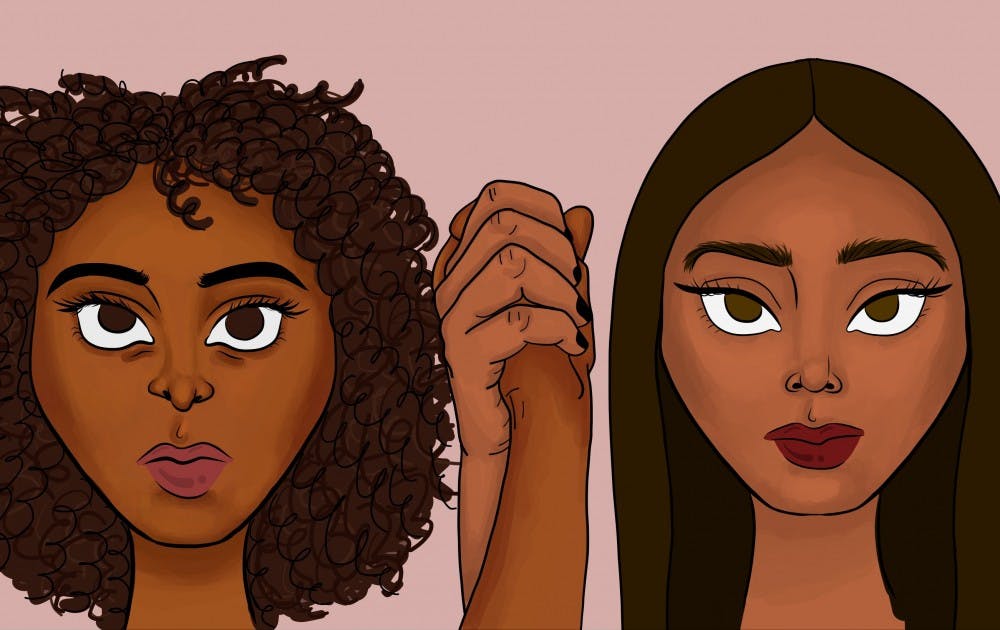Stark differences remain along both gender and racial lines in academic participation – especially in science and technology fields.
According to an analysis from the National Center for Education Statistics, during the 2013 to 2014 academic year, 57 percent of bachelor's degrees in the U.S. were awarded to women while only 35 percent of STEM related degrees were given to women.
Kalani Rice is the program manager for the Center for Gender Equity in Science and Technology. The ASU organization focuses on creating opportunities for women of all races in STEM fields.
“Statistically, we’re underrepresented, not only women but (also) women of color," Rice said. “So that would definitely be the obstacle we’re trying to overcome.”
Among the factors contributing to this disparity, Cynthia Keeler, an assistant professor in the department of physics, identified sexual harassment as one of the major forces discouraging women to join these fields.
“It’s difficult, especially when you’re in a field that’s overwhelmingly male, which physics is,” Keeler said. “Not knowing how anyone is going to respond, and not feeling comfortable with the responses you’ve seen other people get, I think that’s one of the reasons why people choose not to say anything, or if they do choose to say something, decide not to go through the process of making a formal report.”
Keeler said that this ubiquitous culture creates a vicious cycle in which the continual silence surrounding harassment forces many women out of the field, furthering the gender gap.
“I think it’s definitely a feedback relationship,” Keeler said. “Some women make the choice to leave the field, and that has been going on for decades.”
These hurdles aren't just disadvantages to women discouraged from joining STEM fields.
“It’s actually bad for the field as a whole because we lose some excellent physicists,” Keeler said of her own field. “There are people who could advance STEM who never get the chance because they run into subtle, consistent bias, or they run into major harassment or both.”
But the obstacles often begin at a much younger age, according to Rice. She said that young girls, especially young women of color, are not always aware of their option to go into STEM fields.
“It’s not necessarily presented as ‘Why don’t you become a doctor?’ ‘Why don’t you become a scientist?’ Those conversations aren’t necessarily happening with that subset of the population,” she said.
The Center of Gender Equity in Science and Technology aims to change this trend from an early age.
“We’re trying to prepare specifically young women and women of color, or just under-represented individuals, making sure that they’re aware that STEM fields are a reality for them,” Rice said. “So we try to catch them when they’re younger, make sure they understand those options, make sure that they know that this type of space is available to them.”
Through such programs as CompuGirls, which works with local, under-resourced high schools across Arizona and several other states to use culturally responsive teaching methods for STEM suited to young women from different ethnic backgrounds.
Laila Sarah, the assistant director of Capacity Building for the Center, said that STEM materials and curricula are not always culturally responsive to the students they’re being taught to.
“It doesn’t always catch the interest of students because they already have a preconceived notion of what a scientist looks like," Sarah said.
By opening up these preconceived standards of a single way to learn science, the Center hopes to alter the dominant narrative surrounding who can access STEM education in general.
CGEST also runs conferences for collegiate-level women, such as its upcoming Women of Color STEM Entrepreneurship Conference in October, which aims to inspire women in STEM fields to pursue their talents and interests, regardless of the obstacles.
“We want to bring out the skills you have now and build what you have now,” Sarah said. “You don’t have to be perfect in every way – you just have to want to learn and want to continue to be inquisitive.”
CGEST tries to emphasize that the evolution of these fields is dependent on active participation from all genders and races.
“If we continue on the path we are on today, then what real change are we going to make in this world?” Rice asked.
Reach the reporter at Ryan.Ferdowsian@asu.edu or follow @FerdowsianRyan on Twitter.
Like The State Press on Facebook and follow @statepress on Twitter.




